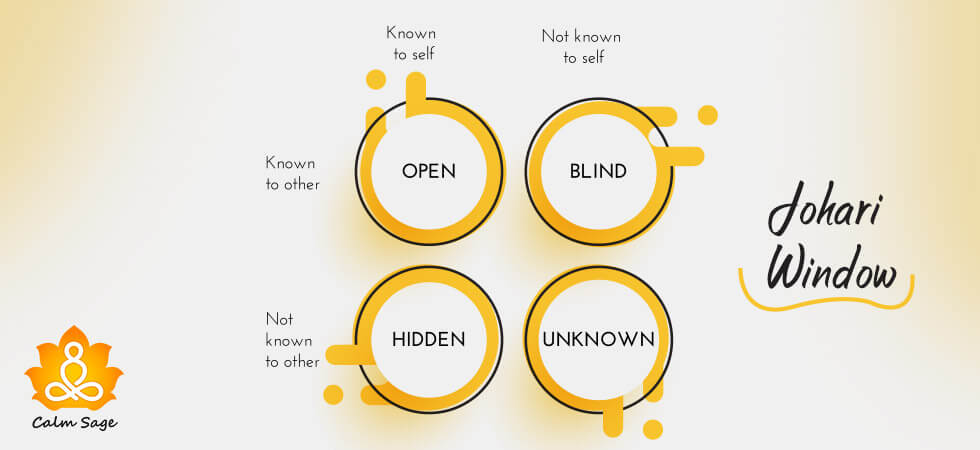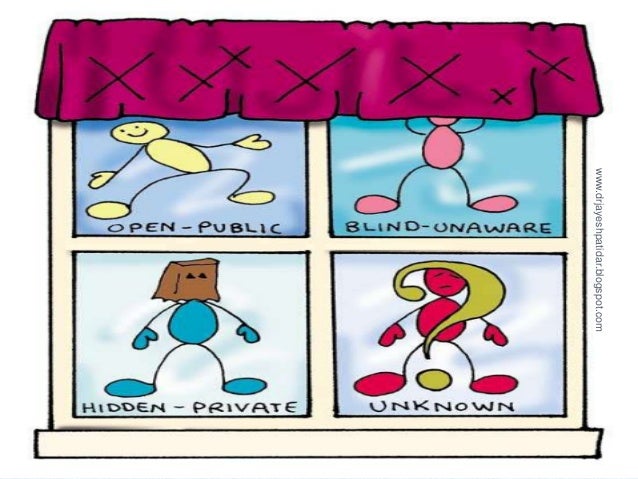Introduction
The Johari Window is a valuable tool in communication that can enhance self-awareness, create openness, and improve interpersonal relationships. By understanding the Johari Window and its benefits, individuals and organizations can develop stronger communication skills, foster trust, and promote collaboration.
Overview of the Johari Window and its significance in communication
The Johari Window is a model created by psychologists Joseph Luft and Harry Ingham in 1955. It shows four areas of knowledge in a person or group. These areas include the open or known area, the blind spot, the hidden or unknown area, and the unknown area. The goal of the Johari Window is to increase the open area while reducing the hidden, blind, and unknown areas.
The key benefits of using the Johari Window in communication are as follows:
- Self-Awareness: The Johari Window encourages individuals to gain a better understanding of themselves by reflecting on their own strengths, weaknesses, and areas for improvement. This self-awareness promotes personal growth and enables individuals to communicate more effectively.
- Improved Interpersonal Relationships: By using the Johari Window, individuals can develop a deeper understanding of others and build stronger relationships. As people share more information about themselves, trust and empathy increase, fostering healthier and more effective communication.
- Enhanced Feedback: The Johari Window facilitates open and honest feedback between individuals, teams, or within an organization. The Johari Window encourages constructive dialogue and promotes growth and improvement by providing a structured framework for giving and receiving feedback.
- Conflict Resolution: The Johari Window can be a powerful tool in resolving conflicts. By increasing self-awareness, individuals can better understand their own reactions and motivations, leading to more effective conflict resolution strategies.
- Team Building: The Johari Window is also useful in team settings. By promoting open and honest communication, team members can better understand each other’s strengths and weaknesses, leading to improved collaboration, trust, and overall team performance.
In conclusion, the Johari Window is a valuable tool in communication that can enhance self-awareness, improve relationships, facilitate feedback, resolve conflicts, and promote team building. By utilizing the Johari Window model, individuals and organizations can foster a more positive and effective communication environment.

Understanding the Johari Window
The Johari Window is a communication model psychologists Joseph Luft and Harrington Ingham developed. It is a tool that helps individuals understand and improve their self-awareness and interpersonal relationships. By using this model, people can better understand the dynamics of communication and increase their effectiveness in various contexts.
Explanation of the four quadrants and their meanings
The Johari Window consists of four quadrants, each representing different aspects of an individual’s self-awareness and the information they share with others. Here is an explanation of each quadrant:
- Open/Free Area: This quadrant represents the information that is known to the individual and others. It includes knowledge, experiences, and feelings that are shared openly and transparently. The open area promotes trust, collaboration, and effective communication.
- Blind Area: In this quadrant, information is known to others but not to the individual. It represents blind spots and hidden characteristics that may be apparent to others but not recognized by the person themselves. By receiving feedback from others, individuals can gain valuable insights about themselves and improve their self-awareness.
- Hidden/Façade Area: The hidden area contains information that individuals are aware of but choose not to disclose to others. This can include personal thoughts, feelings, and experiences that are kept private for various reasons. Building trust and creating a safe environment can encourage individuals to disclose more information from this area.
- Unknown Area: The unknown area represents information that is unknown to both the individual and others. It includes untapped potential, undiscovered talents, and unconscious motivations. Through self-reflection and feedback, individuals can explore and expand their self-awareness, revealing new aspects of themselves.
Development and application of the Johari Window
The Johari Window can be developed and applied through various methods, such as interpersonal exercises, feedback sessions, and reflective practices. By participating in activities encouraging sharing and receiving feedback, people can learn more about themselves and discover new aspects of their personality.
The benefits of using the Johari Window in communication are vast. It enhances self-awareness, improves interpersonal relationships, fosters trust, promotes empathy, and enables effective teamwork. This model allows individuals to navigate complex communication dynamics, minimize misunderstandings, and create a supportive environment for personal and professional growth.

Benefits of Using the Johari Window in Communication
The Johari Window is a popular communication model used to understand and improve self-awareness, trust, and teamwork. This model allows individuals and teams to enhance their communication skills and build stronger relationships.
1. Enhanced Self-awareness
Using the Johari Window encourages individuals to become more self-aware by recognizing their strengths and weaknesses. This awareness allows individuals to leverage their strengths and improve their weaknesses. By understanding themselves better, individuals can communicate more effectively and make better decisions.
The Johari Window also provides insights into blind spots, which are aspects of ourselves that we are unaware of but are visible to others. By uncovering blind spots, individuals can gain valuable feedback and work on personal growth and development.
2. Increased Trust and Transparency
One of the key benefits of using the Johari Window is that it helps build trust and transparency in relationships. By sharing information about oneself, individuals can create a safe and open environment for communication. This fosters trust and encourages others to do the same.
Furthermore, the Johari Window promotes open communication and feedback. It allows individuals to provide constructive feedback in a non-threatening way, which helps build stronger and more honest relationships. Trust is established when communication is open and honest, and relationships can thrive.
3. Effective Teamwork and Collaboration
The Johari Window can also greatly benefit teams and groups. By using this model, team members can develop a deeper understanding of one another, facilitating empathy and fostering a sense of unity. This leads to better teamwork and collaboration, as team members can understand and appreciate each other’s perspectives and strengths.
Additionally, the Johari Window encourages synergy and collective problem-solving. It helps team members identify shared goals and work together towards achieving them. By utilizing the model’s framework for open communication and feedback, teams can overcome challenges and achieve success together.
In conclusion, the use of the Johari Window in communication offers several benefits. It enhances self-awareness, promotes trust and transparency, and improves teamwork and collaboration. This model allows individuals and teams to cultivate stronger relationships, communicate more effectively, and ultimately achieve greater success.

Practical Tips for Using the Johari Window
The Johari Window is a powerful tool that can enhance communication and self-awareness. By understanding this concept, individuals and teams can improve their relationships and achieve greater success. Here are some practical tips for using the Johari Window effectively.
1. Giving and Receiving Feedback
Feedback is a crucial aspect of self-discovery and personal growth. When using the Johari Window, it is important to provide constructive feedback to others and be open to receiving feedback as well.
a. Providing constructive feedback
When giving feedback, focus on the person’s behavior or actions, rather than making personal attacks. Be specific and provide examples to support your points. Use “I” statements to express your thoughts and feelings, and offer suggestions for improvement. Remember, the goal is to help the person expand their self-awareness and increase their understanding of how their behavior impacts others.
b. Receiving feedback with an open mind
When receiving feedback, try to listen without defensiveness and resist the urge to make excuses or become argumentative. Instead, view feedback as an opportunity for growth and learning. Ask clarifying questions to ensure you fully understand the feedback, and thank the person for their input. Reflect on the feedback and consider how you can use it to enhance your self-awareness and improve your relationships.
2. Cultivating Active Listening Skills
Active listening is an essential skill when using the Johari Window. It involves fully focusing on the speaker, maintaining eye contact, and refraining from interrupting. Here are some tips for cultivating active listening skills.
a. Avoiding judgment and assumptions
To truly listen to others, suspending judgment and avoiding making assumptions is important. Instead of jumping to conclusions, ask open-ended questions to gain a deeper understanding of the speaker’s perspective. Show empathy and validate their feelings, even if you may disagree. By actively listening, you can create an environment of trust and openness, enabling effective communication.
In conclusion, the Johari Window is a valuable tool to enhance communication and self-awareness. Individuals and teams can foster healthy relationships and achieve their goals by giving and receiving feedback constructively and cultivating active listening skills.

Conclusion
In conclusion, the Johari Window is a powerful tool that greatly enhances communication and self-awareness. Providing a framework for understanding how we perceive ourselves and how others perceive us helps build trust, improve relationships, and foster personal and professional growth. The benefits of using the Johari Window in communication include increased self-awareness, improved interpersonal relationships, enhanced mutual understanding, and the ability to manage conflicts effectively.
Summary of the benefits of using the Johari Window in communication
- Increased self-awareness: The Johari Window allows individuals to develop a deeper understanding of their thoughts, emotions, and behaviors, leading to personal growth and self-improvement.
- The Johari Window improves interpersonal relationships by promoting openness and transparency. This helps individuals build stronger and more trusting relationships with others, leading to better collaboration and teamwork.
- Enhanced mutual understanding: The Johari Window encourages feedback and dialogue, helping individuals gain insights into how others perceive them. This fosters empathy, empathy, and mutual understanding.
- Effective conflict management: The Johari Window provides a platform for resolving conflicts by promoting open communication, active listening, and trust-building. It helps identify areas of disagreement and find common ground for resolution.
Potential impact on personal and professional growth
The use of the Johari Window in communication can have a profound impact on personal and professional growth. By uncovering blind spots and expanding the open area, individuals can increase their self-awareness and improve their decision-making, problem-solving, and interpersonal skills. This, in turn, can lead to enhanced leadership abilities, career advancement, and overall personal well-being.
References and Additional Resources
- Luft, J., & Ingham, H. (1955). The Johari window, a graphic model of interpersonal awareness. Proceedings of the western training laboratory in group development, 1(2), 111-118.
- Gordon, G. G. (1986). The “Johari window” and its applications to risk communication in the nuclear waste field. Risk Analysis, 6(4), 389-398.
- “Johari Window.” Mind Tools, https://www.mindtools.com/pages/article/newTMM_51.htm. Accessed 4 November 2021.




